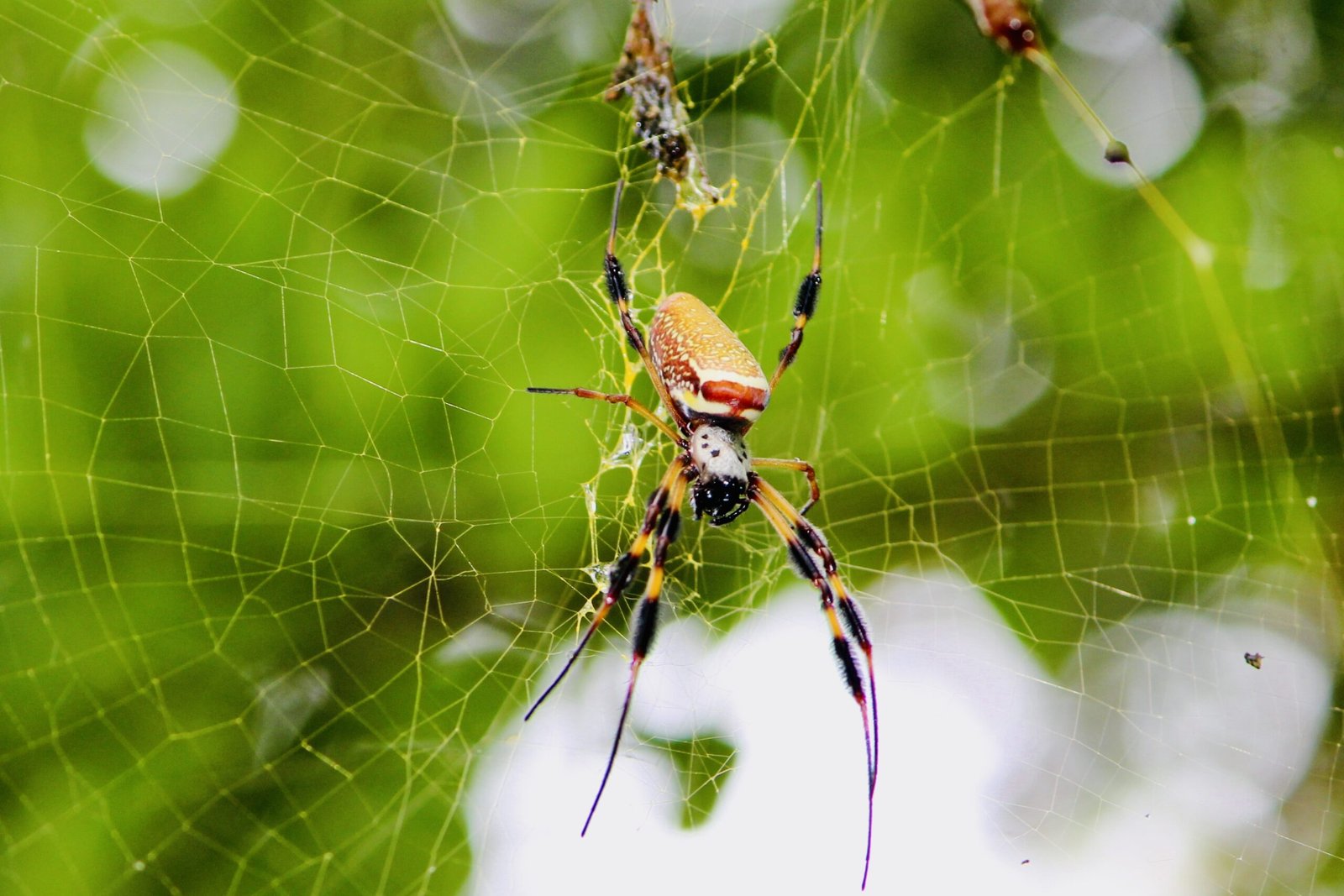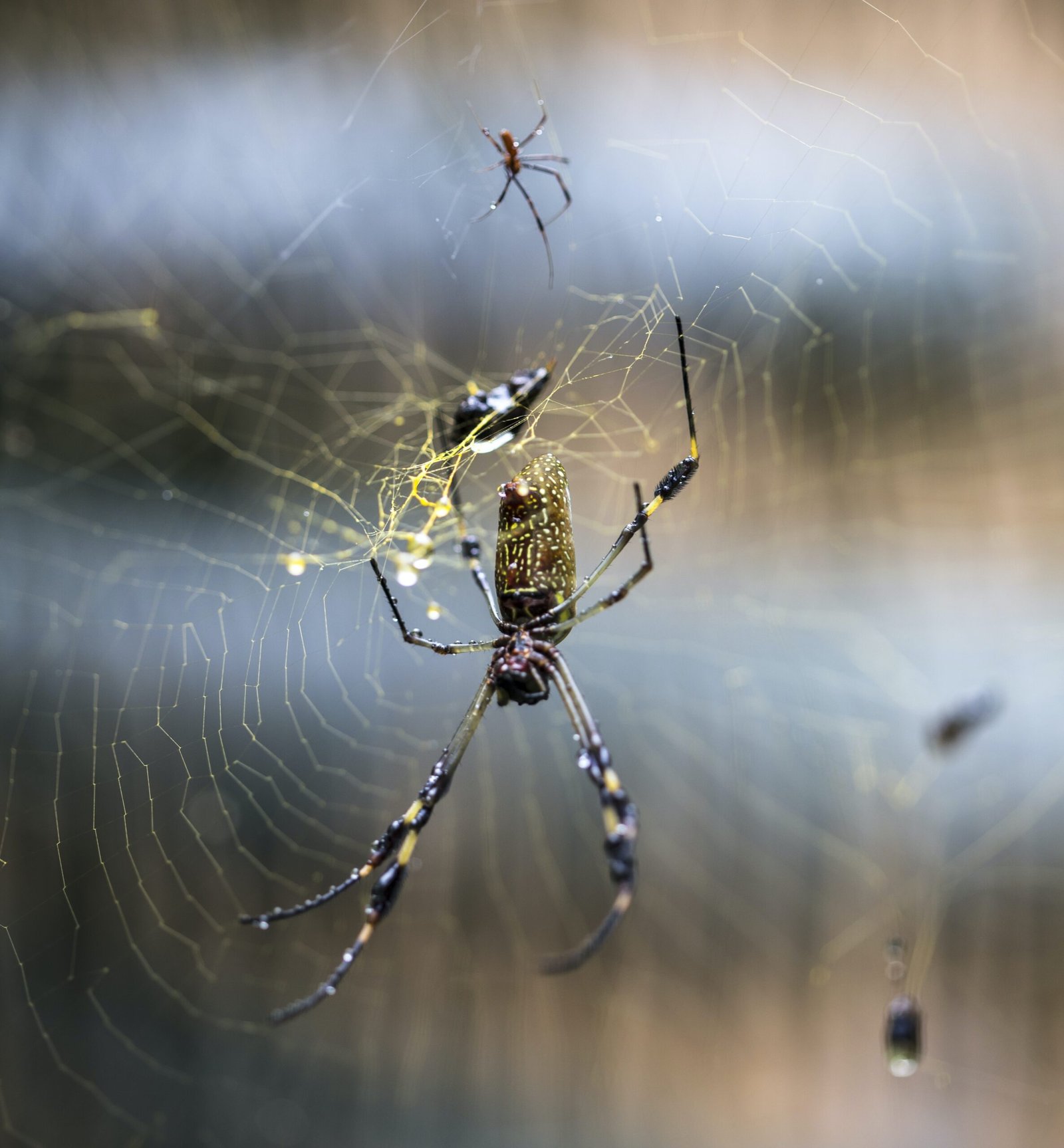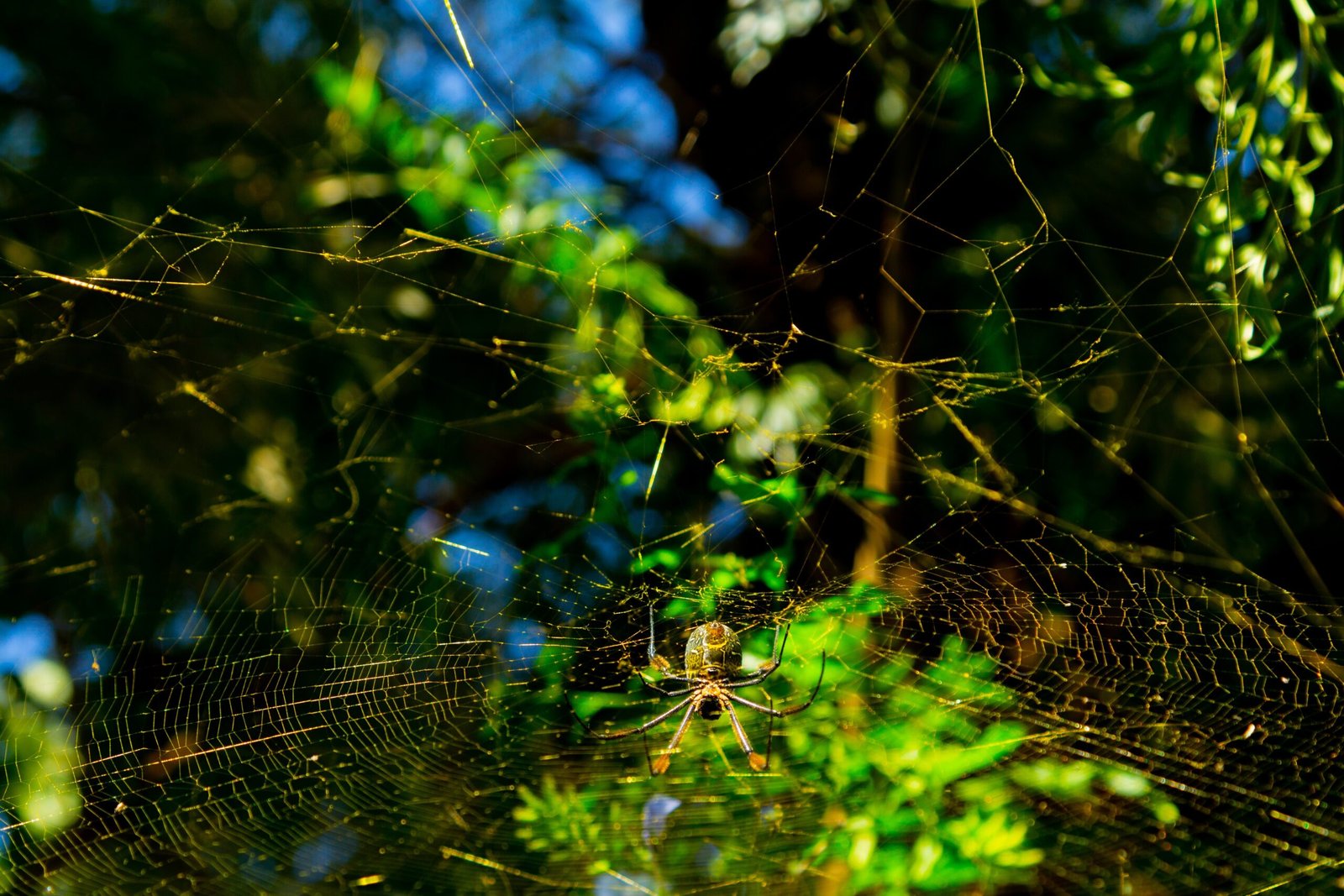Imagine encountering a creature that seems to have sprung from the pages of a mythical tale, with its shimmering, golden-hued abdomen glinting in the sunlight. The mysterious Golden orb-weaver spider, known for its exquisite beauty and delicate yet resilient nature, has captured the curiosity of arachnid enthusiasts around the world. But what exactly are the characteristics that make this spider so unique, and how can we ensure their wellbeing in captivity? In this article, we will explore the enchanting world of the Golden orb-weaver spider, shedding light on its intricate features and revealing the care requirements needed to maintain these elusive creatures. Step into this captivating realm, and embark on a journey unlike any other – delving into the secrets of the Golden orb-weaver spider.
Characteristics of the Golden Orb-weaver Spider
Physical Appearance
The Golden Orb-weaver Spider, also known as Nephila clavipes, is a striking arachnid that showcases unique physical characteristics. On average, the body size of a female Golden Orb-weaver can range from 2 to 5 centimeters, while males are significantly smaller, measuring around 1 centimeter.
Size
As mentioned earlier, the size of the Golden Orb-weaver varies between genders. Female spiders tend to be larger, with leg spans ranging from 10 to 16 centimeters, while the males typically have leg spans of around 2 to 3 centimeters. Their impressive size makes them an incredible species to observe.
Coloration
The Golden Orb-weaver Spider owes its name to its magnificent colors. Females boast a vibrant blend of yellow, gold, and brown on their bodies, which shimmer in the sunlight. Males, on the other hand, have more subdued coloration, typically featuring a mix of brown and gray. Their vivid colors add to the allure of these creatures.
Web Structure
The most distinguishing characteristic of the Golden Orb-weaver Spider is its intricate web structure. These spiders are renowned for their skill in spinning large, circular webs made from incredibly strong silk. The silk itself has a golden hue, which gives the spider its name. These webs are often seen suspended between trees or in open spaces, spanning up to 2 meters in diameter. The strong and flexible nature of the web allows it to capture and hold prey with ease.
Habitat and Distribution
Preferred Habitat
Golden Orb-weaver Spiders are commonly found in tropical and subtropical regions worldwide. They typically thrive in habitats such as forests, gardens, and grasslands, preferring areas with abundant vegetation. These spiders choose locations where their webs can be easily supported and have a higher chance of capturing prey.
Geographical Distribution
The Golden Orb-weaver Spider has a wide-ranging geographical distribution. They can be found in various regions across the globe, including Australia, Africa, Asia, and parts of the Americas. Within these regions, the spiders adapt to the local climate and environment, showcasing slight variations in behavior and appearance.

Behavior and Lifestyle
Web-building Behavior
The Golden Orb-weaver Spider is known for its impressive web-building behavior. The female spiders construct large, circular webs, often positioned at a considerable height above the ground. These webs are designed to trap flying insects such as moths, bees, and wasps. The spiders patiently wait in the center of their webs for their prey to become entangled, and then skillfully immobilize and consume them.
Feeding Habits
As opportunistic predators, Golden Orb-weaver Spiders primarily feed on a diet of insects. Their webs are specifically designed to capture flying prey, which they then expertly devour. These spiders have been observed catching and consuming various insects, including butterflies, bees, beetles, and even small birds. Their predatory behavior ensures they receive the necessary nutrients for survival.
Reproduction
When it comes to reproduction, the Golden Orb-weaver Spider has a unique mating behavior. Males often approach females cautiously and must take care to avoid being mistaken for prey. To successfully mate, the male will use special courtship behaviors to communicate his intentions. Once mating is complete, females produce several egg sacs containing hundreds of eggs, which are then carefully protected until they hatch.
Defensive Mechanisms
Golden Orb-weaver Spiders possess certain defensive mechanisms to protect themselves from perceived threats. When startled or feeling threatened, they may exhibit defensive behaviors such as rearing on their hind legs, raising their front legs, and rapidly moving side to side. Additionally, some individuals may release silk to create a barrier between themselves and the perceived threat.
Environmental Requirements
Temperature
Golden Orb-weaver Spiders thrive in warm temperatures, typically ranging from 75 to 85 degrees Fahrenheit (24 to 29 degrees Celsius). It is important to maintain a consistent temperature within this range to ensure the well-being and activity levels of these spiders.
Humidity
Maintaining appropriate humidity levels is crucial for the overall health and survival of Golden Orb-weaver Spiders. They thrive in moderately humid environments, with humidity levels ranging from 50% to 70%. Regular misting and monitoring of humidity levels are necessary to prevent dehydration.
Lighting
Golden Orb-weaver Spiders are accustomed to the natural lighting conditions of their habitat. Indirect, natural sunlight is beneficial, providing them with the necessary light to sustain their well-being. However, direct sunlight for prolonged periods may lead to overheating, so it is important to provide shaded areas within their enclosure.
Substrate
The substrate in the enclosure should mimic the natural environment of the Golden Orb-weaver Spider. A mix of soil, peat moss, and organic matter can be used to provide a suitable substrate. This substrate will allow the spiders to burrow and create intricate tunnels, reflecting their natural habitat.

Enclosure Setup
Size and Design
Providing a spacious enclosure is vital to accommodate the active nature and web-building behavior of the Golden Orb-weaver Spider. A vertically oriented setup with ample height is recommended to allow the spiders to construct their characteristic large webs. A terrarium or a custom-built enclosure made from a well-ventilated material would provide the necessary space for these spiders.
Temperature and Humidity Control
Maintaining an appropriate temperature and humidity range is essential for the health and well-being of Golden Orb-weaver Spiders. To control temperature, using a heat mat or heat lamp on one side of the enclosure can create a temperature gradient. Mist the enclosure regularly to maintain adequate humidity levels, ensuring proper hydration for the spiders.
Substrate Selection
Choosing the right substrate is important for Golden Orb-weaver Spiders. A combination of soil, peat moss, and organic matter creates a suitable substrate that can retain moisture without becoming waterlogged. This substrate should be deep enough to allow for burrowing and tunneling, providing a natural environment for the spiders.
Decorations
Adding decorations to the enclosure can provide enrichment and simulate the natural environment of the Golden Orb-weaver Spider. Branches, leaves, and plant cover can be used to create a more natural-looking habitat. Additionally, providing fake or live plants can provide hiding spots and allow the spiders to construct their webs more efficiently.
Hiding Spots
Building hiding spots within the enclosure is essential for the Golden Orb-weaver Spider to feel secure. Small, enclosed spaces, such as cork bark or hollowed logs, can be placed strategically within the enclosure. These hiding spots not only provide a sense of security but also encourage natural behaviors and reduce stress levels.
Feeding and Nutrition
Food Preferences
Golden Orb-weaver Spiders have a diverse palate and primarily feed on flying insects. They have been observed catching and consuming various insects, including moths, bees, butterflies, beetles, and small birds. Providing a variety of live prey that falls within their natural diet ensures they receive the necessary nutrients to thrive.
Feeding Schedule
Golden Orb-weaver Spiders should be fed regularly to meet their nutritional needs. Adult spiders can be fed every 3 to 5 days, while juveniles may require more frequent feedings. Observing their feeding behavior and assessing the condition of their webs can help determine the appropriate feeding schedule.
Supplements
In addition to a varied diet of live prey, Golden Orb-weaver Spiders may benefit from supplements to ensure they receive all essential nutrients. Offering calcium-rich supplements, such as gut-loaded insects or calcium powder, can help prevent nutritional deficiencies and promote overall health.

Maintenance
Cleaning
Maintaining a clean enclosure is crucial for the health of Golden Orb-weaver Spiders. Regularly remove uneaten prey, shed exoskeletons, and any waste materials from the enclosure. Carry out a thorough cleaning at least once a month by removing all substrate, cleaning the enclosure, and replacing it with fresh substrate.
Web Handling
Golden Orb-weaver Spiders invest a significant amount of time and energy into building their intricate webs. When it comes to handling these spiders, it is best to avoid interfering with their webs as much as possible. Carefully navigating around the enclosure and minimizing disturbances can help prevent unnecessary damage to their webs.
Monitoring Health
Regularly monitor the health of Golden Orb-weaver Spiders to ensure any potential issues are addressed promptly. Observe their feeding behavior, web construction, activity levels, and overall appearance. Any changes in behavior or signs of distress should be noted, and appropriate care should be provided or a veterinarian consulted if necessary.
Handling and Safety
The Golden Orb-weaver Spider is generally not recommended to be handled, as they can be delicate and easily injured. If necessary, always use extreme caution and handle them with gentle movements, avoiding any sudden or forceful actions. It is essential to prioritize the safety of both the spider and the handler when attempting any form of handling.
Common Health Issues
Web Damage
Web damage can occur due to accidental disturbances, aggressive prey, or the spider’s own activities. Regularly inspect the web for any signs of wear and tear or significant damage. If necessary, provide additional support structures or adjustments to the enclosure layout to prevent repeated damage to the web.
Infections
Golden Orb-weaver Spiders are susceptible to various infections, most commonly caused by bacteria or fungi. Monitor for signs of swelling, discoloration, or other abnormalities in the spider’s body or legs. Any signs of infection should be addressed promptly, either through appropriate cleaning and sterilization or by consulting a veterinarian.
Parasites
Parasites, such as mites or ticks, can pose a threat to the health of the Golden Orb-weaver Spider. Regularly inspect the spider’s body for any signs of external parasites. A magnifying glass may be useful in identifying any small insects or mites. If parasites are detected, appropriate treatment should be sought to prevent further harm.
Malnutrition
Inadequate nutrition can lead to various health issues in Golden Orb-weaver Spiders. Monitor their feeding behavior and observe their web construction to ensure they are capturing prey effectively. Any signs of malnutrition, such as weight loss or lethargy, should be addressed by adjusting their diet or seeking veterinary advice.

Interaction and Care
Minimizing Stress
Golden Orb-weaver Spiders are sensitive to stress, and unnecessary disturbances can adversely affect their well-being. Minimize any sudden loud noises, vibrations, or unnecessary handling to reduce stress levels. Providing a quiet and calm environment helps maintain their overall health and promotes their natural behavior.
Monitoring Activity
Regularly monitor the activity levels of Golden Orb-weaver Spiders to ensure they are displaying normal behavior. Observe their movement, web construction, and feeding habits to assess their overall health. Any significant changes in activity should be investigated further to identify any underlying issues.
Observation and Documentation
Engaging in regular observation and documentation of the behavior and physical attributes of Golden Orb-weaver Spiders can provide valuable insights into their health and well-being. Keep a record of feeding schedules, web construction patterns, and any notable changes in behavior. Documentation facilitates early recognition of possible health issues and allows for appropriate care.
Veterinary Care
If any significant health concerns arise or if you have any questions or uncertainties regarding the care of Golden Orb-weaver Spiders, it is highly recommended to consult a veterinarian who specializes in arachnids. A veterinarian can provide expert advice, diagnose potential health issues, and offer appropriate treatment options to ensure the well-being of your spiders.
In conclusion, the Golden Orb-weaver Spider, with its striking physical appearance, intricate web structure, and unique behaviors, is indeed a remarkable arachnid. By providing a suitable habitat, carefully monitoring their health and behavior, and addressing their specific care requirements, you can ensure these elusive creatures thrive in captivity. With proper care, the Golden Orb-weaver Spider can be a fascinating addition to the world of arachnid enthusiasts.
